In popular mythology, Jack Trice played football for Iowa State College in a cardinal jersey with gold friction strips. Earlier this season, when Iowa State University unveiled their throwback uniforms inspired by the 1923 team, the jerseys were cardinal with gold mock friction strips. However, does this common sentiment have any basis in reality? The colors of cardinal and gold can look remarkably similar in black and white photos and my research uncovered many questions and few answers. Ultimately, I believe Jack Trice and his teammates wore a gold jersey for the 1923 season including the infamous Minnesota game as well as for the spring game earlier that year. The sole exception was the Simpson game. Along the way, I caught wind of another exciting development in Trice’s story.

Before tackling the enigma of the gold jerseys, we need to consider the previous year, which was Coach Sam Willaman’s first at Iowa State after leading East Technical High School to multiple championships behind the talents of Trice and the Behm brothers. As Willaman soon discovered during the 1922 season, many of ISC’s opponents shared similar colors, which often led to confusing games. During the season opener against Coe, the Cyclone team was forced to wear two thick wool jerseys on top of one another to create the necessary contrast in the game. Making matters worse, it was a sunny summer day of 90 degrees.
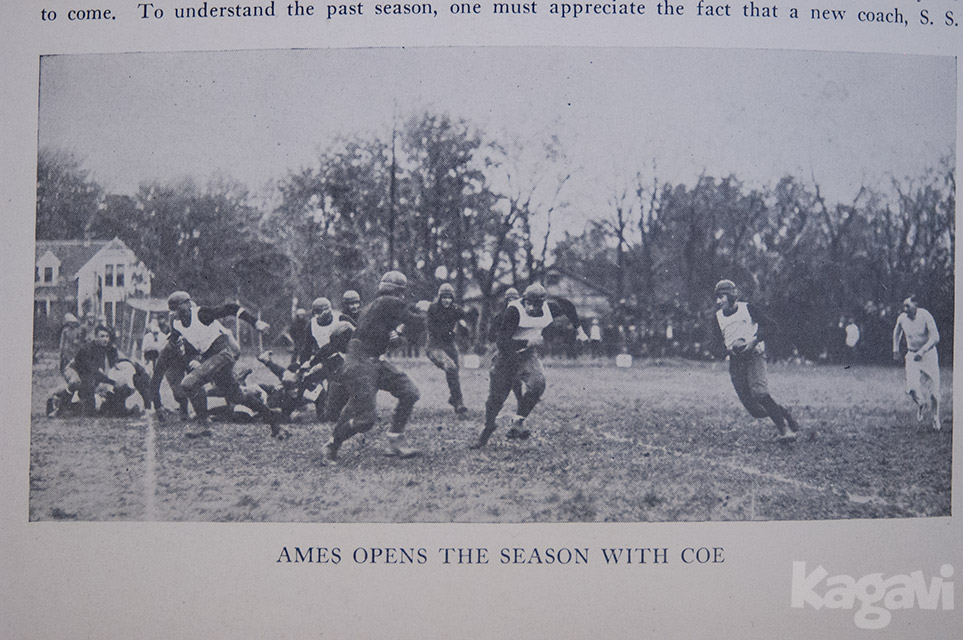
The team photo showed solid color jerseys with just a few players wearing contrasting oval jerseys. From newspaper reports, we know the team wore only cardinal jerseys that season. Yet, all of the individual player portraits in the Bomb yearbook showed jerseys with friction strips that were cut even and reflective.
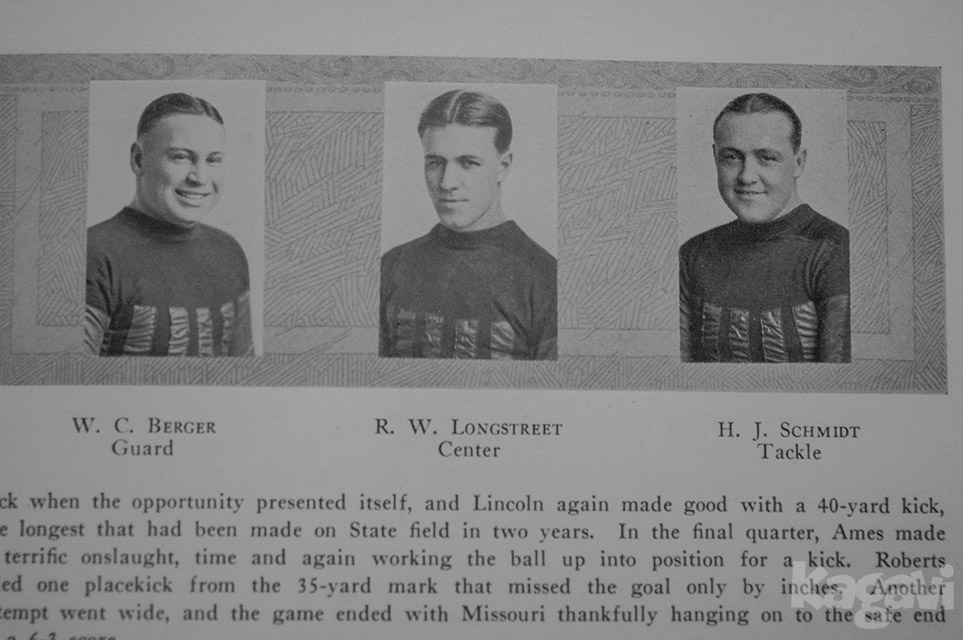
Oddly, these jerseys didn’t appear at all in the game photos of the 1922 season and the 1923 spring football game didn’t have any sign of those jerseys. In the picture at top, the new jerseys with friction strips that created a pointed design were worn by all players. Leading up to the 1923 season opener against Simpson, the Iowa State Student reported on Willaman’s efforts to create a new uniform which reversed the traditional cardinal jersey with gold numerals to a gold jersey with cardinal numerals.
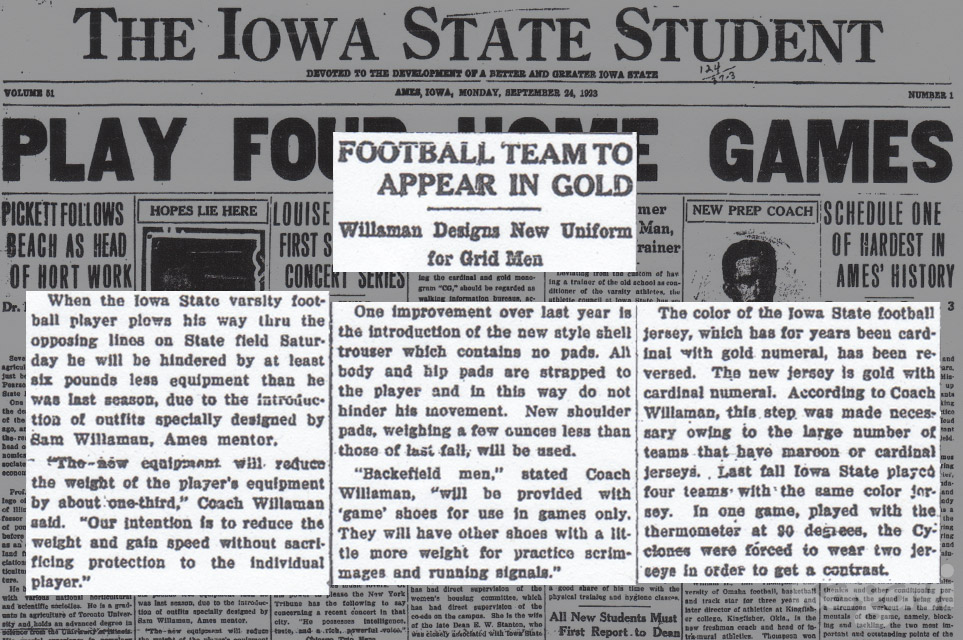
The Friday before Trice’s first game against Simpson, a small blurb in the newspaper mentioned the ISC team wouldn’t be debuting the new gold jerseys after all “due to the fact that Simpson wears a similar outfit. In view of this fact, the Cyclones will don their red jerseys to create a contrast.” I revisited the feature story I recently wrote about the discovery of Trice in a game photo. In the photo of the Simpson game, we can see two ISC players wearing the “unworn” 1922 jerseys from the portraits–made clear by the lack of a pointed design.
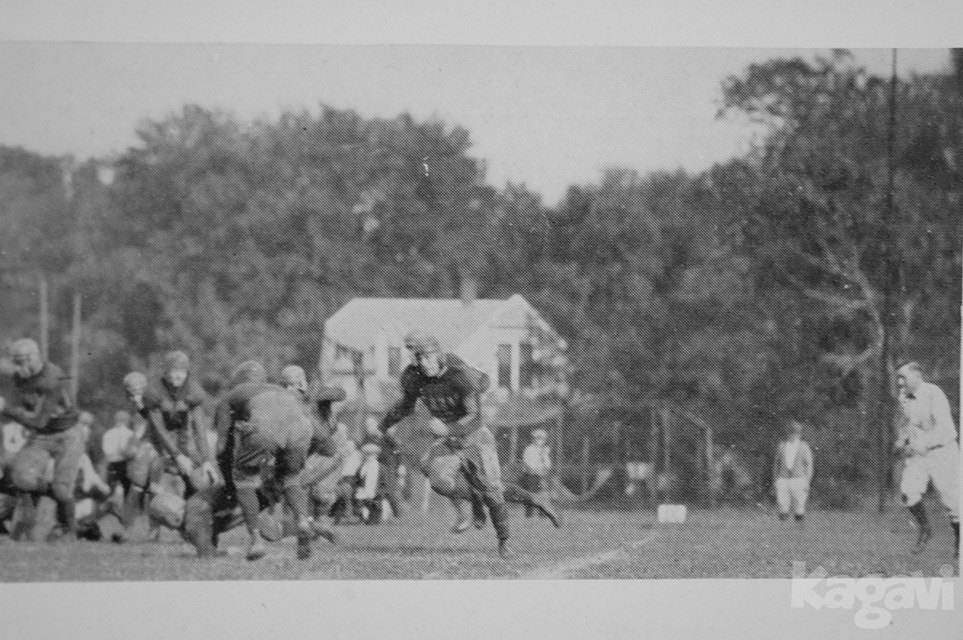
When Trice and the Ames football team traveled to Minnesota the following week, they brought along the gold jerseys. A check of Minnesota Golden Gopher history confirms the football team had yet to introduce gold into their color scheme in 1923 and they were wearing maroon jerseys. Willaman had previously expressed concern that his team was playing other squads with similar jersey colors, so it would make no sense to pair cardinal against maroon. Minnesota was a big challenge for the Ames team and the Cyclones needed every advantage in the game, including the new uniforms and shoes that were six pounds lighter. Prior to the game, the Minnesota Daily student newspaper mentioned the Ames team practiced at Northrop Field in “gold sweaters and red stockings.” Revisiting one of the Minnesota game pictures reveals the pointed friction strip jerseys were used.
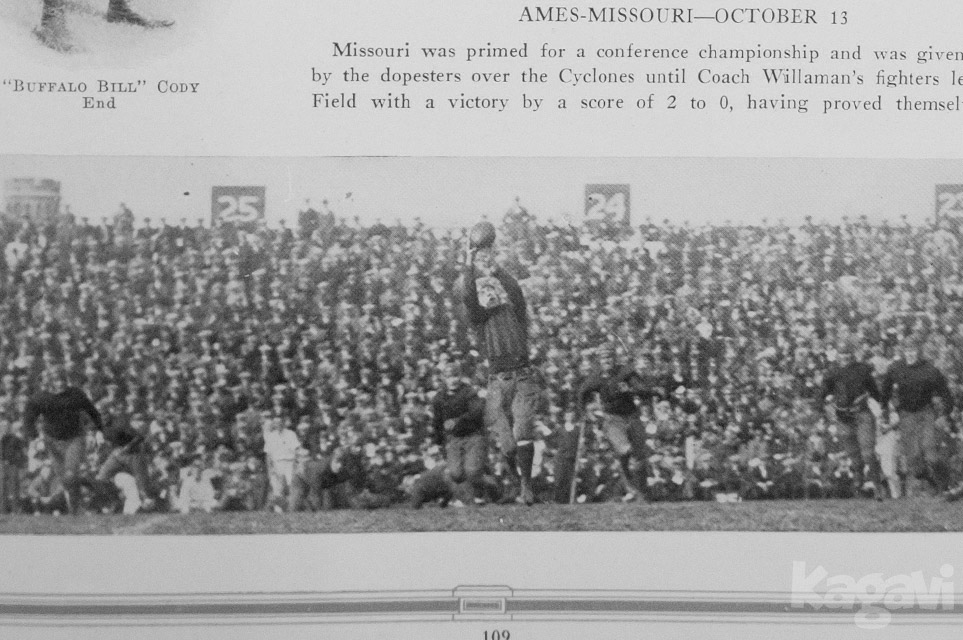
The rest of the 1923 game photos have the same pointed friction strip jerseys and only one picture from the season shows a visible rear number on a Cyclone player from an undetermined game after Trice’s death. As Ames makes a goal line stand, we see a Cyclone player running by the goalpost. At first glance, it appears to be consistent with previous reports of cardinal rear numbers.
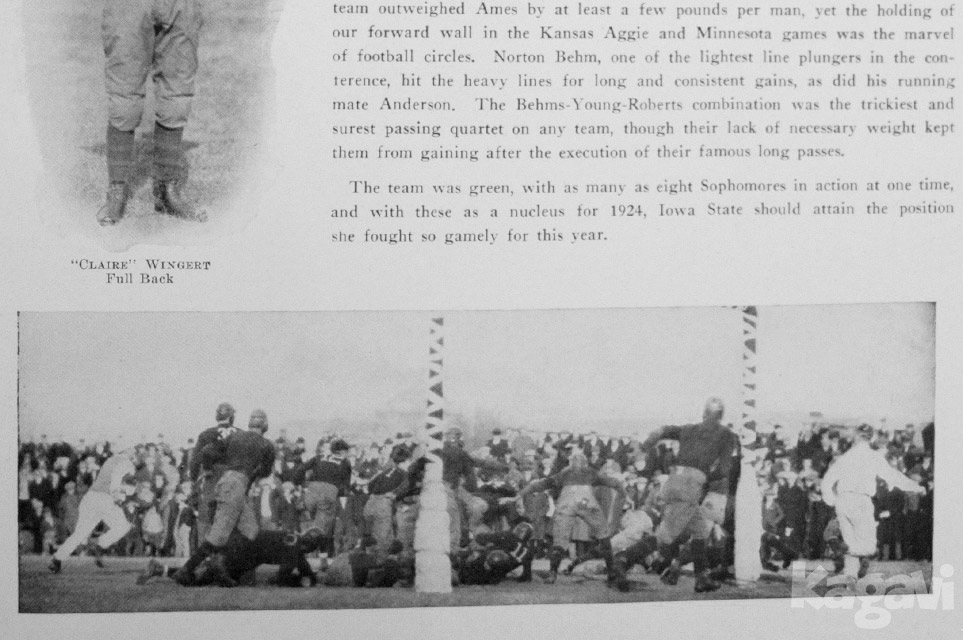
Another critical clue came after a day of scanning through microfilm in the basement of Parks Library. Writing after the last game of the year, the Iowa State Student included an ode to the season, which referred again to the “gold jerseys” of the Ames team. If the gold jerseys were the exception rather than the rule–this would be a curious phrasing. Checking the team picture after Trice’s death, we can see nearly all of the team wearing the same uniforms from the spring game and majority of the season.
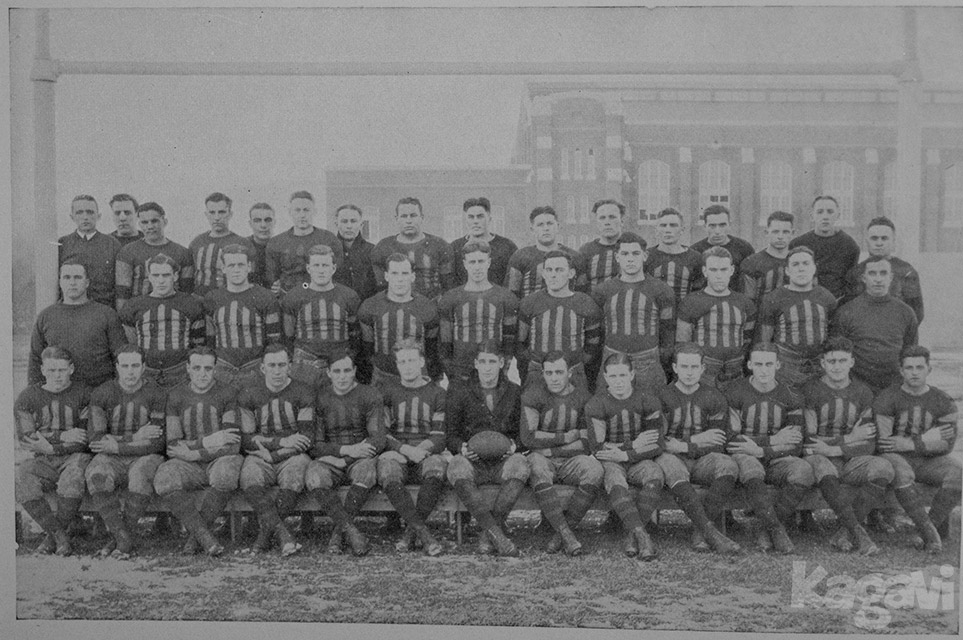
Norton Behm in the front row is wearing a different jersey, which foreshadowed the 1924 team picture where most players had a jersey with dark friction strips.
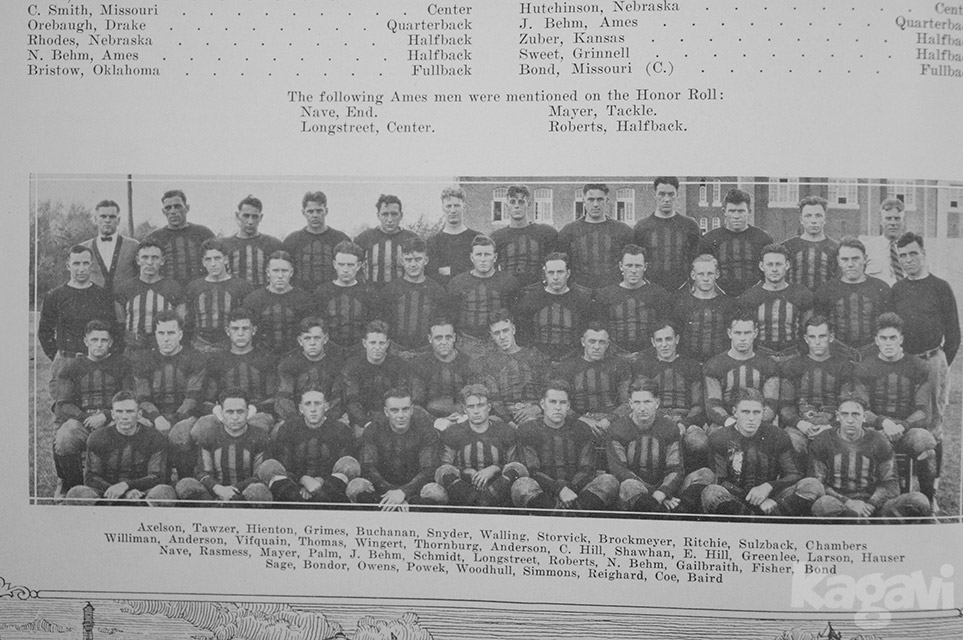
If we peek ahead one year, there is a significant clue in the 1926 Bomb that recapped the 1925 season (which would’ve been Trice’s senior year). A painting shows two teams playing in front of State Gym. The cardinal jersey friction strips look like a deep navy blue or black–which could explain the 1924 picture. Blue wouldn’t be unusual, because All-American Ed Bock played in a navy blue jersey for ISC a decade later. It’s true that the painting could be a fantasy representation, yet State Gym is reproduced with the correct number and placement of windows, which suggests an exacting eye for detail. The team picture looks similar to 1924.
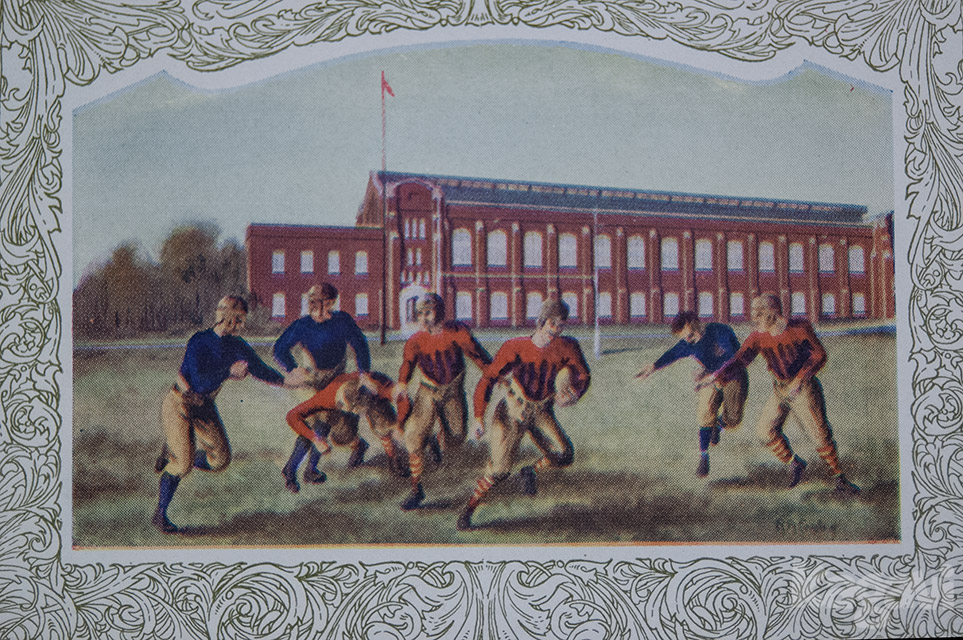
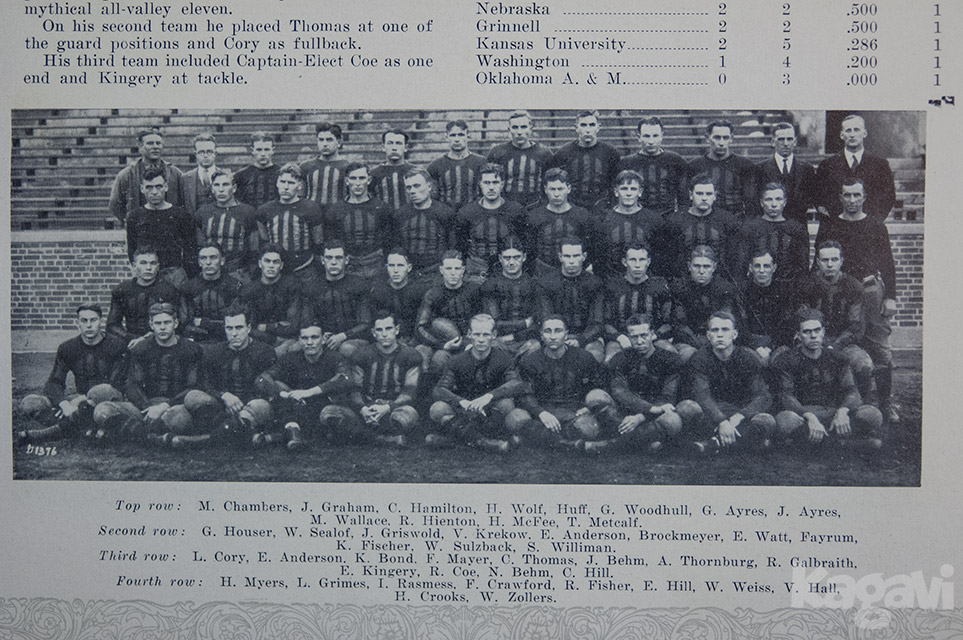
_____________
What does it all mean?
Pinning down a definite date for the appearance of road/alternate uniforms in college football history is surprisingly difficult. The early 1910s through 1930s saw many revolutionary changes in college football including equipment updates. Alabama started wearing white road uniforms in 1919. When Iowa clashed with Notre Dame in the famous 1921 game at Iowa City, Knute Rockne unveiled the first example of green jerseys in Notre Dame history. Rockne wanted his team to stand out from Iowa’s dark jerseys, so the usual navy blue jerseys were shelved for the game. Although Iowa won on their way to an undefeated season behind Duke Slater and Aubrey Devine, the green jerseys took root in Irish tradition. At nearby Northwestern, a white jersey design was added in 1928 to their usual purple jerseys, but they weren’t strictly meant for away games.
During Trice’s time at Iowa State, the football team clearly had both cardinal and gold jerseys. When trying to trace a source of information, the leap from speculation to fact is a tenuous one, as we have found with my previous stories chronicling his jersey number and game photo discoveries. When viewed in black and white, cardinal and gold hues can appear virtually identical. After studying the 1923 ISC jerseys in extreme detail for far more hours than I care to admit, I am confident the friction strips were made out of a canvas material. In some pictures, the material frays in a manner congruent with canvas.
Friction strip jerseys are pretty rare and when I searched through auction catalogs, I was able to pull together a few representative examples of the 1920s era. I also included a numbered jersey with a gold fabric common to the era. Also, the green jersey had friction strips with a wear pattern that I judged similar to some of the 1923 pictures.
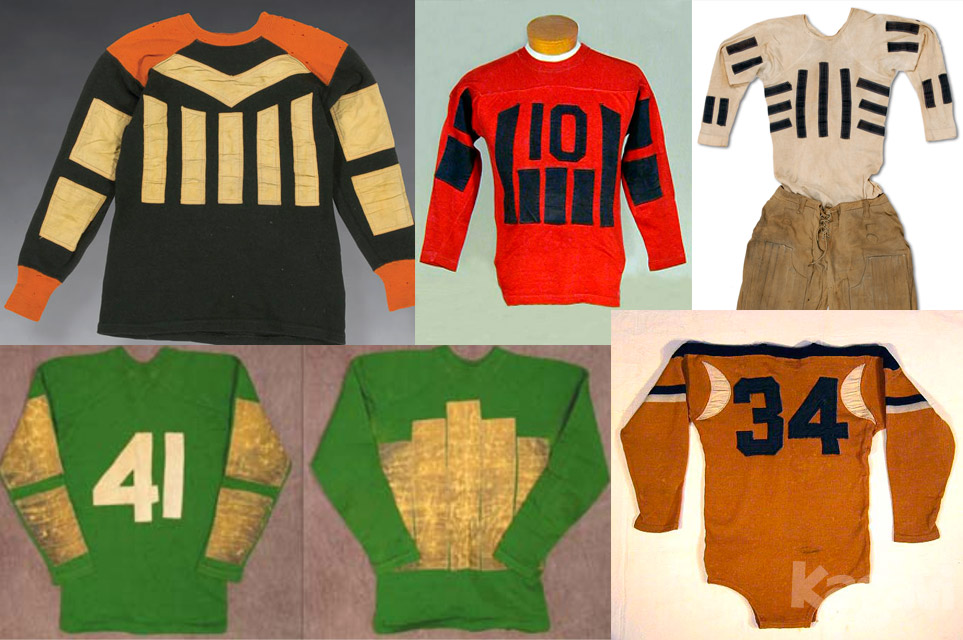
Just last year, Paul Lukas at Uni Watch wrote about a jersey being offered for auction with amazing canvas friction strips in great shape.
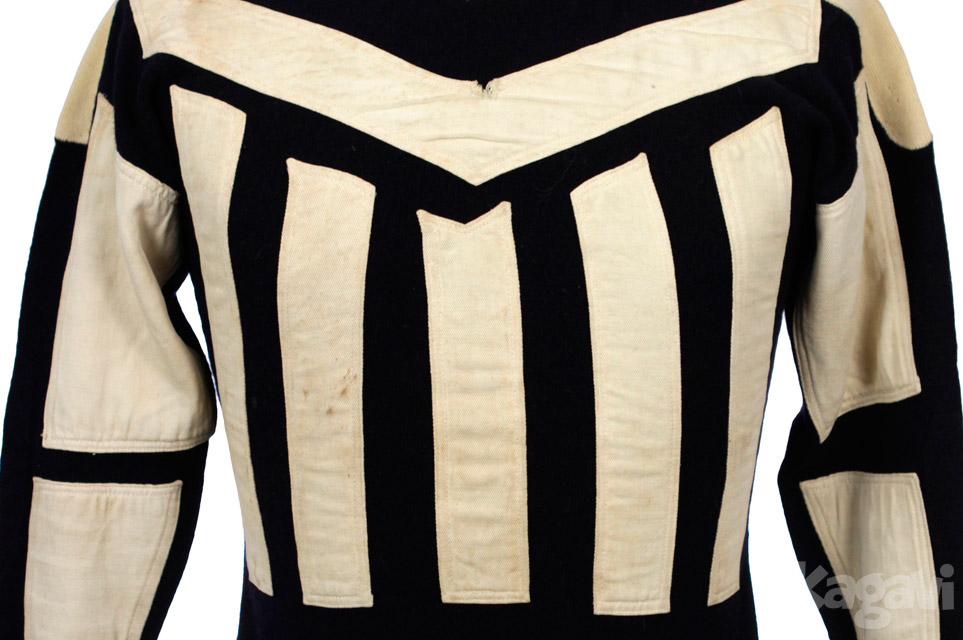
I took the time to mock up some possible Cyclone football jersey color combinations below. I created six different shades of gold and cardinal and overlaid possible friction strip colors taken from the pictures above.
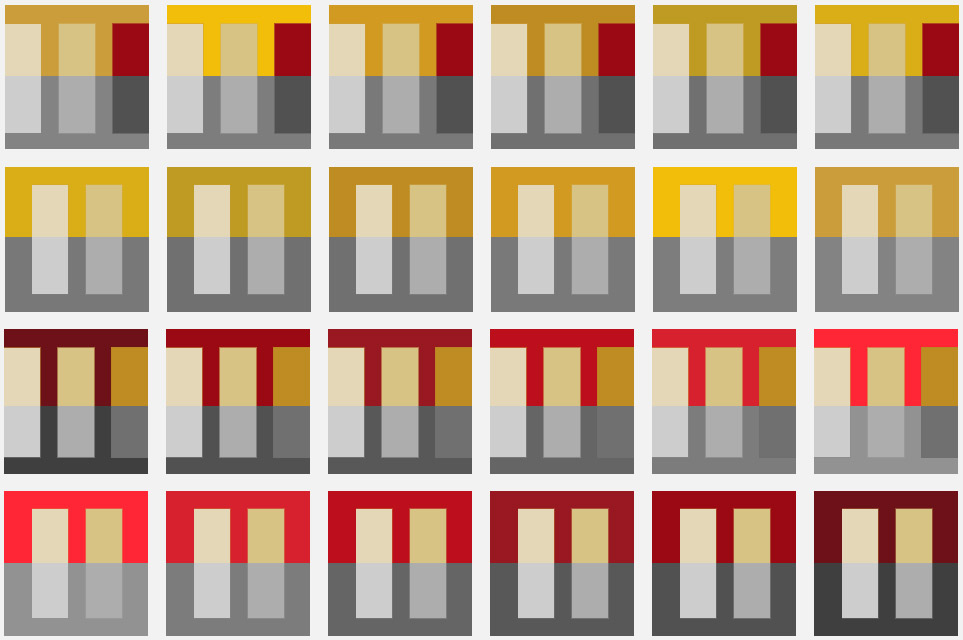
In particular, look at the second and last row from the top. The second box from the left in both rows are identical in grayscale even though the “jerseys” themselves are drastically different. With this visual data to bolster my research above, I feel confident that Jack Trice was wearing a gold jersey with light tan canvas friction strips in all of the spring game photos and in the Minnesota game. After Trice’s death, I believe the gold jerseys had black memorial armbands attached and the team wore them the rest of the season before “retiring” the jerseys and introducing another design the following year. I believe the Cyclone team switched back to cardinal jerseys with black or navy blue friction strips for most of 1924 and 1925.
I made an educated guess in the colorized picture of Jack Trice at top and I wanted to convert the gold jersey back to grayscale to compare it with the other jerseys. Below, we can see that the gold color with tan friction strips matches the other jerseys exactly.
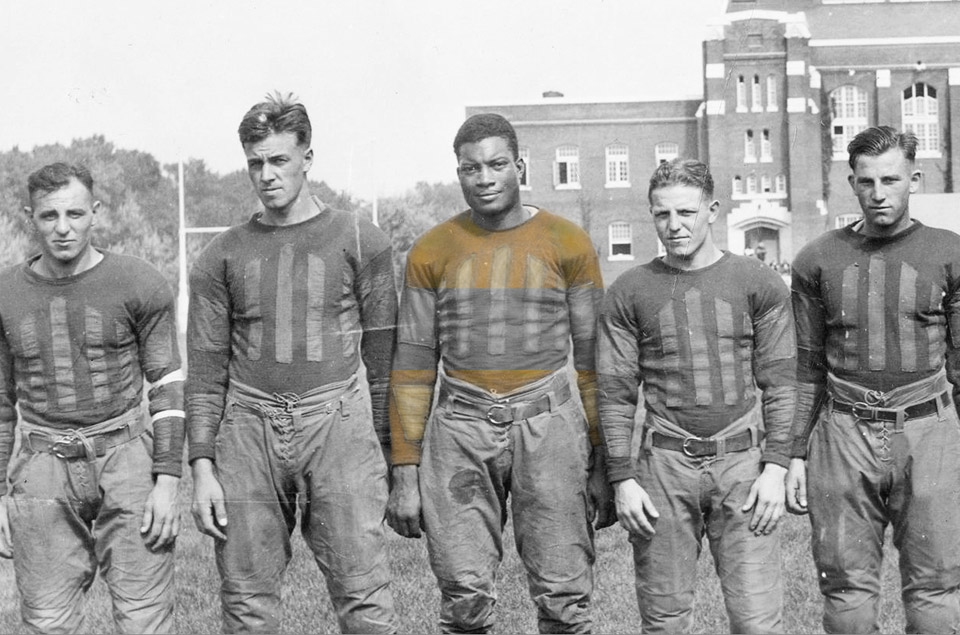
Finally, when I was in Ames in late August, I met an individual in a campus coffee shop to discuss Jack Trice. Halfway through the conversation, they leaned in close and disclosed it was in that very same coffee shop where they met another mysterious person who claimed to have access to an actual Cyclone football jersey with a black memorial armband on the left sleeve, which would clearly date it from 1923. This supposed authentic jersey was gold. The trail went cold from there and the mysterious person has disappeared.
I’m turning my focus towards finding whether this jersey exists or not. What other Trice treasures could exist out there? Stay tuned.
Thanks once again to ISU librarian Becky Jordan for chasing down some newspapers and verifying several facts for me.
